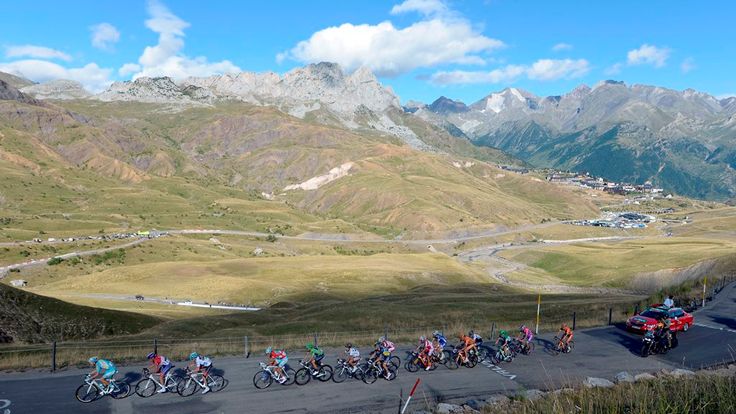The 2014 Vuelta a Espana looks set to be one of the most keenly contested Grand Tours in recent seasons and the winner is likely to be decided on the race's mountain stages.
Alto de San Miguel de Aralar (stage 11)
Length: 9.9km
Average gradient: 7.5 per cent
Maximum gradient: 14 per cent
Status: Category one
The first of four summit finishes in a punishing second week, the climb to Alto de San Miguel de Aralar may well be the easiest of the quartet, but it is far from a pushover. The ascent starts beside a river, before rising up a valley side on a winding road that regularly alternates between steep and shallow sections. The steeper parts are around the ten per cent mark, but the easier sections drop all the way down to about three per cent. However, a stinging maximum ramp awaits 2km from the finish, and it is likely to be here that the riders with good legs make their moves.
La Camperona (stage 14)
Length: 8.3km
Average gradient: 7.5 per cent
Maximum gradient: 24 per cent
Status: Category one
Last 3km only shown
It may be its first inclusion on the Vuelta, but the fearsome climb to La Camperona has the potential to become a classic with its brutally steep gradients. The climb is 8.3km long, but the gentle opening slopes will do little to prepare the riders for what's to come. After passing through the village of Olleros de Sabero, the road kicks up with gradients of up to ten per cent. However, the worst is yet to come, as the peloton tackle the final three kilometres and face the punishing maximum gradient of 24 per cent in a 1.5km stretch that averages a sobering 17 per cent. The ascent will weed out the weaker legs in the bunch and inevitably create splits between the general classification contenders.
Lagos de Covadonga (stage 15)
Length: 12.2km
Average gradient: 7.2 per cent
Maximum gradient: 17.5 per cent
Status: Especial category
In contrast to the previous day's summit finish, Lagos de Covadonga is a familiar climb for the Vuelta, having been used 18 times since its first appearance back in 1983. The ascent to the lakes around Covadonga is considered to be one of the most important in the history of the race - and it's certainly one of the most scenic. The climb itself is consistently steep, frequently rising into double figures, but the average is brought down by two short downhill sections, at around 9km and 11km. The hardest part, however, comes right at the end, with the finish line being guarded by a fierce 17.5 per cent ramp.
Lagos de Somiedo (stage 16)
Length: 16.5km
Average gradient: 6.2 per cent
Maximum gradient: 12.5 per cent
Status: Category one
The climb to the summit finish of stage 16 is the longest of the race and comes at the end of a mountain stage that takes in no less than five category-one peaks. The biggest is saved for last and while it may not be the steepest, its length will grind down the tired peloton who will already have 135km in their legs by the time they hit the foot of the climb. The toughest section - boasting a maximum gradient of 12.5 per cent - comes between 4km and 6km into the climb, and although the road eases off considerably in the middle section, it rears back up in the final third to complete a stern mountain test.
Monte Castrove (stage 18)
Length: 7.2km
Average gradient: Six per cent
Maximum gradient: 12 per cent
Status: Category two
The category-two Alto Monte Castrove is far from the biggest or hardest summit finish at the Vuelta and the short, sharp climb is unlikely to have an impact on the general classification. The peak tops out at a maximum gradient of 12 per cent and will suit the punchers in the bunch, or a breakaway rider, rather than one of the general classification contenders.
Puerto de Ancares (stage 20)
Length: 12.7km
Average gradient: 8.7 per cent
Maximum gradient: 18 per cent
Status: Especial category
This is the last categorised climb of the 2014 Vuelta and, as might be expected, it's a tough final test for the battered peloton. The stage will be the last chance for the general classification hopefuls to fight it out before the final stage and the Puerto de Ancares climb will be the likely battleground. The climb reaches its sapping maximum gradient of 18 per cent about 4km in, and although it eases off slightly, the gradient remains in the low teens for the next 5km. The climb will find out who has made it through the previous three weeks in the best shape and it could yet decide the overall winner.
To see more of
@VeloViewer's 3D profiles, visit
veloviewer.com
